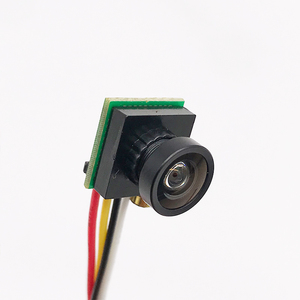Introduction to the Smallest Camera Size
The world of photography has rapidly evolved, with an increased demand for compact solutions that do not compromise on quality. Enter the smallest camera size category—ideal for professionals and amateurs alike, who seek portability without sacrificing performance. These miniature marvels fit snugly into pockets, making them perfect for spontaneous shooting, travel, and daily capture of life’s special moments. In this description, we will dive deeper into the types, applications, features, and advantages of the smallest camera size.
Types of Smallest Camera Size
- Point-and-Shoot Cameras: These are straightforward devices, offering simplicity and ease of use with automatic settings for those who prefer not to delve deeply into technicalities.
- Action Cameras: Built for adventure, action cameras are compact and rugged. Ideal for outdoor activities, they capture high-definition footage in a tiny frame.
- Smartphone Cameras: Modern smartphones come equipped with powerful cameras that rival dedicated devices, often featuring multiple lenses in the smallest camera size.
- Mirrorless Cameras: With the elimination of the mirror box found in traditional DSLRs, mirrorless systems can be incredibly compact while still delivering exceptional image quality.
Applications of Smallest Camera Size
- Travel Photography: The lightweight nature of the smallest cameras makes them perfect travel companions, enabling photographers to capture stunning landscapes and dynamic street scenes without burden.
- Vlogging: Compact cameras are increasingly popular among content creators and vloggers for their portability and high-quality video capabilities, allowing for easy on-the-go shooting.
- Street Photography: Their unobtrusive design allows photographers to capture candid moments in vibrant urban settings without drawing too much attention.
- Underwater Photography: Many of the smallest camera sizes are designed to be waterproof, making them ideal for capturing stunning underwater scenes during snorkeling or diving adventures.
Features of Smallest Camera Size
- High-Resolution Sensors: Despite their size, many small cameras come equipped with advanced sensors that deliver high-resolution images and videos, ensuring that each shot is clear and detailed.
- Wi-Fi and Bluetooth Connectivity: Seamlessly share captures through built-in connectivity options. This feature allows users to transfer images to smartphones or social media directly.
- Stabilization Technology: Most smallest cameras include electronic image stabilization or optical stabilization options to ensure steady shots even during movement.
- Creative Modes: They often feature various shooting modes and filters to enhance creativity, allowing users to play with settings like time-lapse, slow-motion, and HDR.
Advantages of Smallest Camera Size
- Portability: The most apparent benefit is their compact nature—you can easily carry them in your pocket or bag without the bulkiness of larger cameras.
- User-friendly: Most models are designed with ease of use in mind, making them accessible for photographers of all skill levels.
- Affordability: Generally, smaller camera sizes tend to be more affordable than larger DSLRs, offering excellent value for quality photography.
- Versatility: Whether for family gatherings, sporting events, or travel, these cameras adapt well to a wide range of scenarios, making them incredibly versatile.






















































